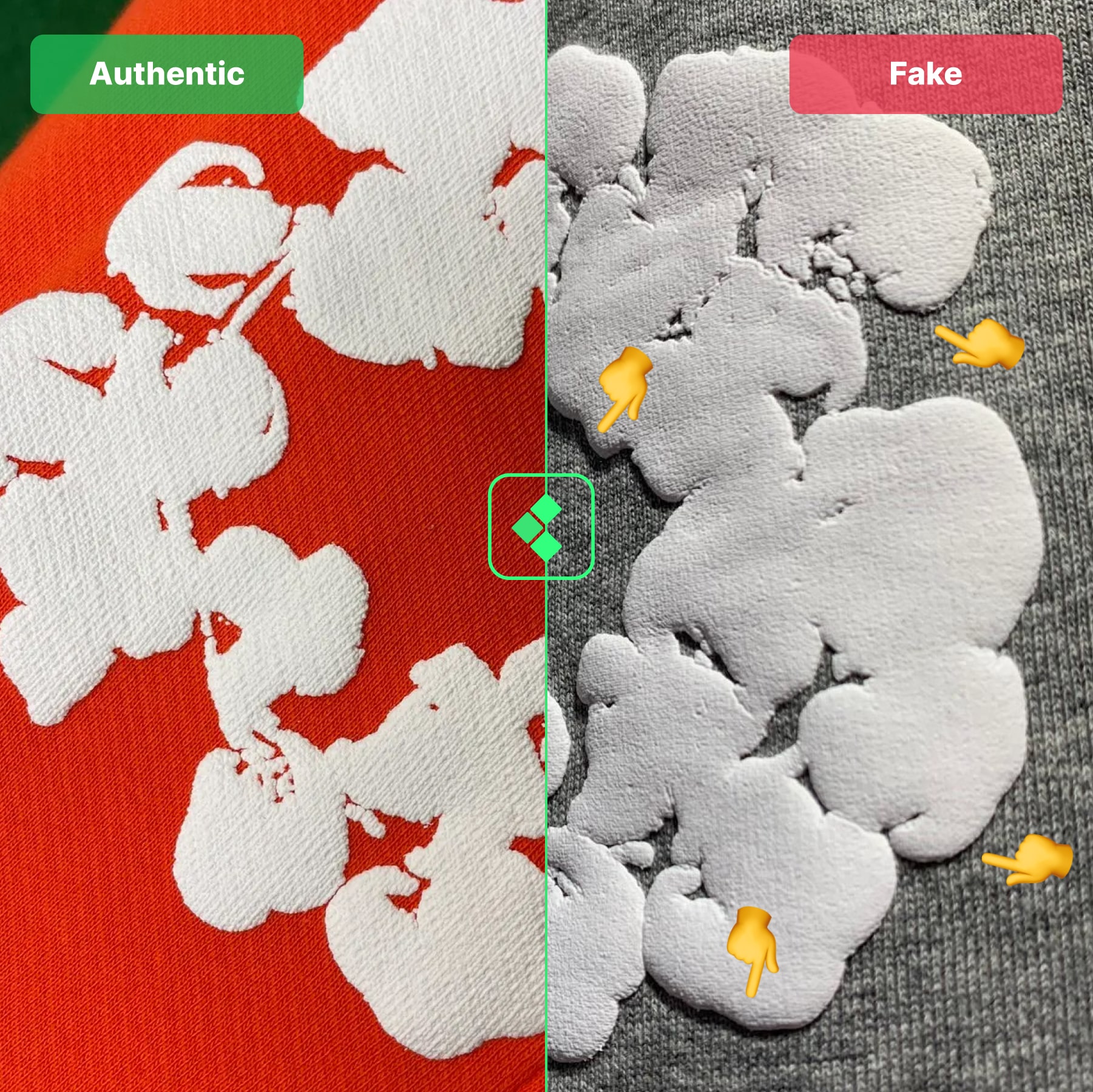Real Denim Teardrops: your 11-point authenticity guide
Replica Denim Tears are everywhere, but you can outsmart them with an exact, visual-first checklist. Use the comprehensive tests below to authenticate labels, prints, manufacturing, and provenance rapidly.
Denim Tears, founded by Tremaine Emory, blends storytelling with streetwear, which means fakes ride hype waves after every drop or collaboration. The goal remains not theory; we offer field guide you can apply from marketplace pictures or in-hand examinations. Focus on typography, print execution, stitching, partnership features on Levi’s garments, and a proof chain that makes logical with the actual launch.
Why do DT fakes look convincing now?
Modern counterfeiters employ superior blanks, higher screen resolution, and cleaner label designs, so the traditional “feel the garment” test isn’t adequate. You need several overlapping signals, not one isolated tell.
Factories now duplicate maintenance labels and swing tags from real genuine pieces, reproduce the botanical design at high quality, and even mimic co-branded Levi’s patches. Counterfeiters seldom match all aspects within once, though. This implies your advantage is pattern matching across labels, graphics, manufacturing, and sourcing. A fake might pass a print test but miss barcode or product validation, or look proper at the front but fail under hardware examination of a Levi’s collaboration.
How does real compare to fake with one glance?
Use this fast assessment to triage dubious garments before you dive deeper. One mismatch won’t condemn; two or more should trigger a hard pass.
| Element | Genuine cue | Counterfeit tell |
|---|---|---|
| Main plus care labels | Clean microtype, uniform gaps, multi-panel care data including correct fiber plus origin | Unclear typography, misspellings, lone thin denim tears hoodie label, vague without proper fiber content |
| Graphic print | Sharp borders, even ink coverage, no haloing; botanical elements well-defined | Bleeding at edges, plasticky appearance, premature cracking or sticky feel |
| Stitching and seams | Even gauge, uniform twin-needle hems, tidy overlock, clean shoulder binding | Wavy hems, hanging fibers, irregular overlock, inadequate thread tension |
| Levi’s collab hardware | Legit Levi’s shanks/rivets, accurate dual-brand marking and lot data | Generic buttons, incorrect typeface, mismatched lot plus dimension stamps |
| Product tag and barcode | Scannable code that resolves toward accurate model/color | Generic plus duplicate barcodes repeated for colors/sizes |
| Value with source | Aligned with value benchmarks from reputable sellers | Suspiciously low stock, no verifiable provenance or receipt |
Comprehensive authentication checks you must complete in minutes
Start with labels. One, check central neck or size tag for clean, uniform fonts and spacing; genuine labels don’t use blurry small text or misaligned kerning. Two, flip for care label stack: you should find uniform wash symbols, accurate fiber content, a country of origin that matches the category, plus style or batch number that isn’t meaningless text. Three, verify product tag: the barcode should scan or simply match the printed style name and color, and string durability must be sturdy, avoiding weak.
Move to visual elements. Four, examine botanical wreath or lettering under bright light; authentic screen layers display even saturation including crisp leaf edges, avoiding misted halo. Additionally, look across seams on all-over prints; authentic items can show minor offset due to sectional application, but the graphics preserve scale and sharpness rather of stretching plus smearing at joins. Six, rub the print lightly—real ink applications stay set and cured, not tacky and peeling fresh out from bag.
Inspect construction. Seven, scan hems showing uniform double-needle stitching and consistent stitch length; reinforcement strips on tees must stay neat and fully captured in-seam. Eight, check inside overlock: the thread path should be consistent including tidy thread terminations, not frayed tangles. Nine, measure clothing item against size guides plus known comps; counterfeits often run off by two to three centimeters in body length and width due to inaccurate sizing.
Confirm collaboration details. Ten, for partnership with Denim Tears, examine components: real collabs use legitimate Levi’s shanks plus fasteners, co-branded leather or paper patches with correct lot/fit info, and internal tags that reflect both brands. The red tab, if present, will conform Levi’s typography standards, and the batch number should match genuine silhouette like standard and Type II instead of generic numbers. Eleven, cross-check release validity: does this hue option, wash, or motif location exist in any official lookbook, retailer listing, or runway coverage? If you cannot visually confirm it to an actual drop, assume it’s fantasy.
Expert Tip: Demand that seller for seamless 10–15 second recording to zooms from primary label to wash tags to the hem and then to visual elements, without cuts. Unbroken movement exposes printing flaws, stitching waviness, and flimsy tags that single pictures hide.

Where should purchases happen and verify?
Stick to the official Denim Tears site, vetted stockists, or consignment platforms with itemized authentication and buyer protection. Independent sellers are viable when they supply clear macro photos with documented receipts.
Before paying, backwards check photos to confirm being original and avoid copying from old drops. Ask for time-verified pictures of the label stack, hang tag with back, and collab hardware or labels. Compare the item with press images plus reliable reviews for specific drop; release timelines with retailer blogs assist verification whether a certain finish or placement was real. Pay with approaches to offer chargeback security plus avoid requests for friends-and-family transfers on expensive items.
What do many collectors miss about brand history?
Context helps verify since counterfeiters often miss social details that influence creative choices. Knowing how these pieces exist makes it easier to catch inappropriate items.
Verified facts worth remembering in mind: Creator Tremaine launched Denim label for 2019 with floral wreath motif as commentary on the African American story and the cotton economy in America; beginning with ongoing collaborations involve brands, where 501 jeans and Type II/III outerwear display featured all-over wreath applications; the brand partnered with Converse on footwear capsules that expand storytelling beyond clothing; authentic Levi’s collaborations follow Levi’s own production standards for hardware, batch data, and label structure, so mismatched Levi’s details are immediate warning signs.
A quick process for authenticate before buying
Begin with the macro: does the piece exist in known catalogs and retailer archives within claimed season? Upon verification, move to details: label typography, maintenance marking collection, and barcode consistency. Inspect print sharpness with stitching with macro, well-lit photos, then confirm any Levi’s collaborative components and lot numbers with known Levi’s specifications. Close by verifying cost and provenance with current sales and asking for single-take video examination. If two and extra checks fail, skip while wait for better opportunity.
One final point: manufacturing variance occurs, but it’s bounded. Genuine pieces might display small differences regarding design placement or thread precision, yet they avoid pairing misspellings, sloppy construction, fantasy washes, plus non-functional barcodes. Look regarding harmony across details, never flawless in one.




